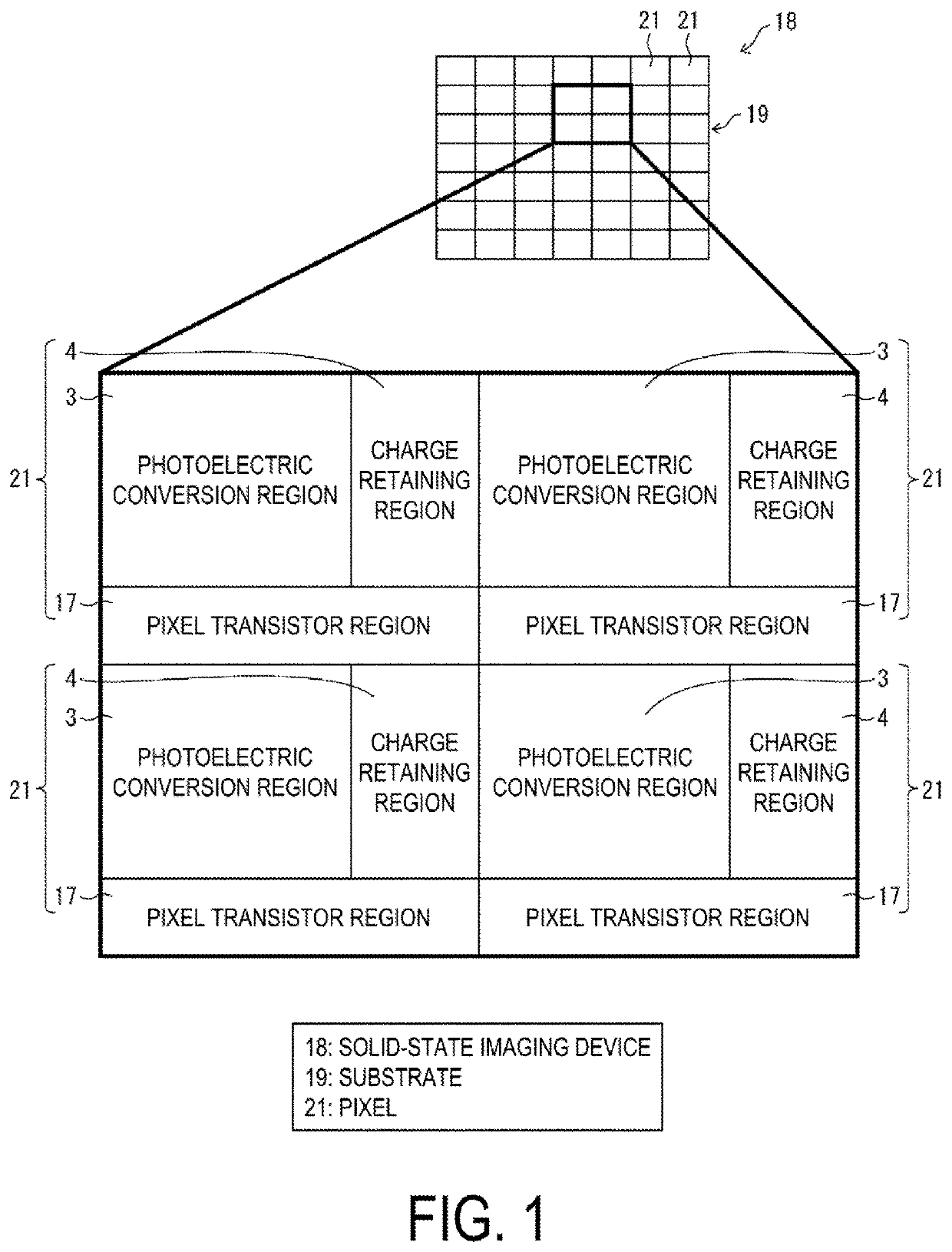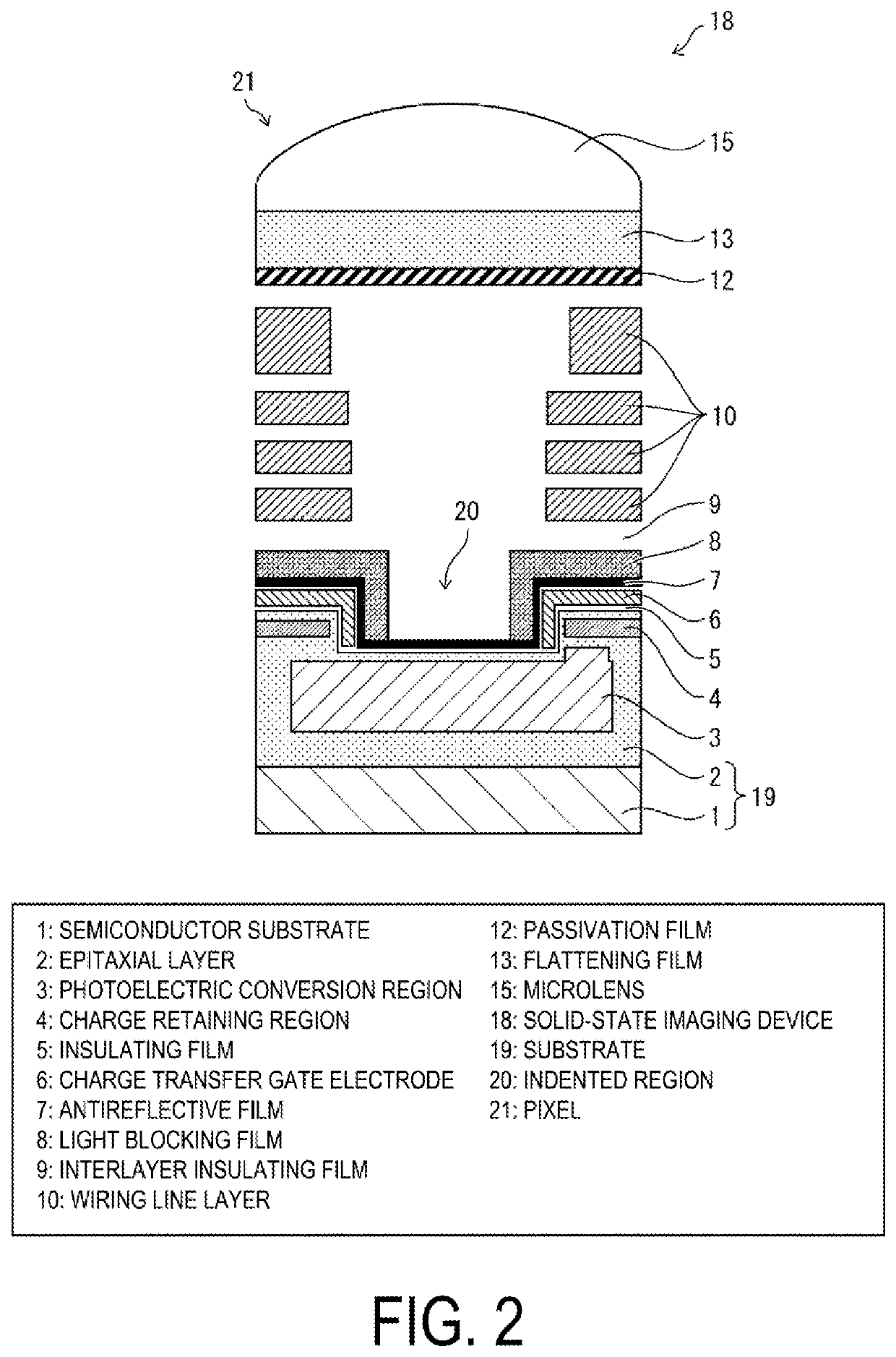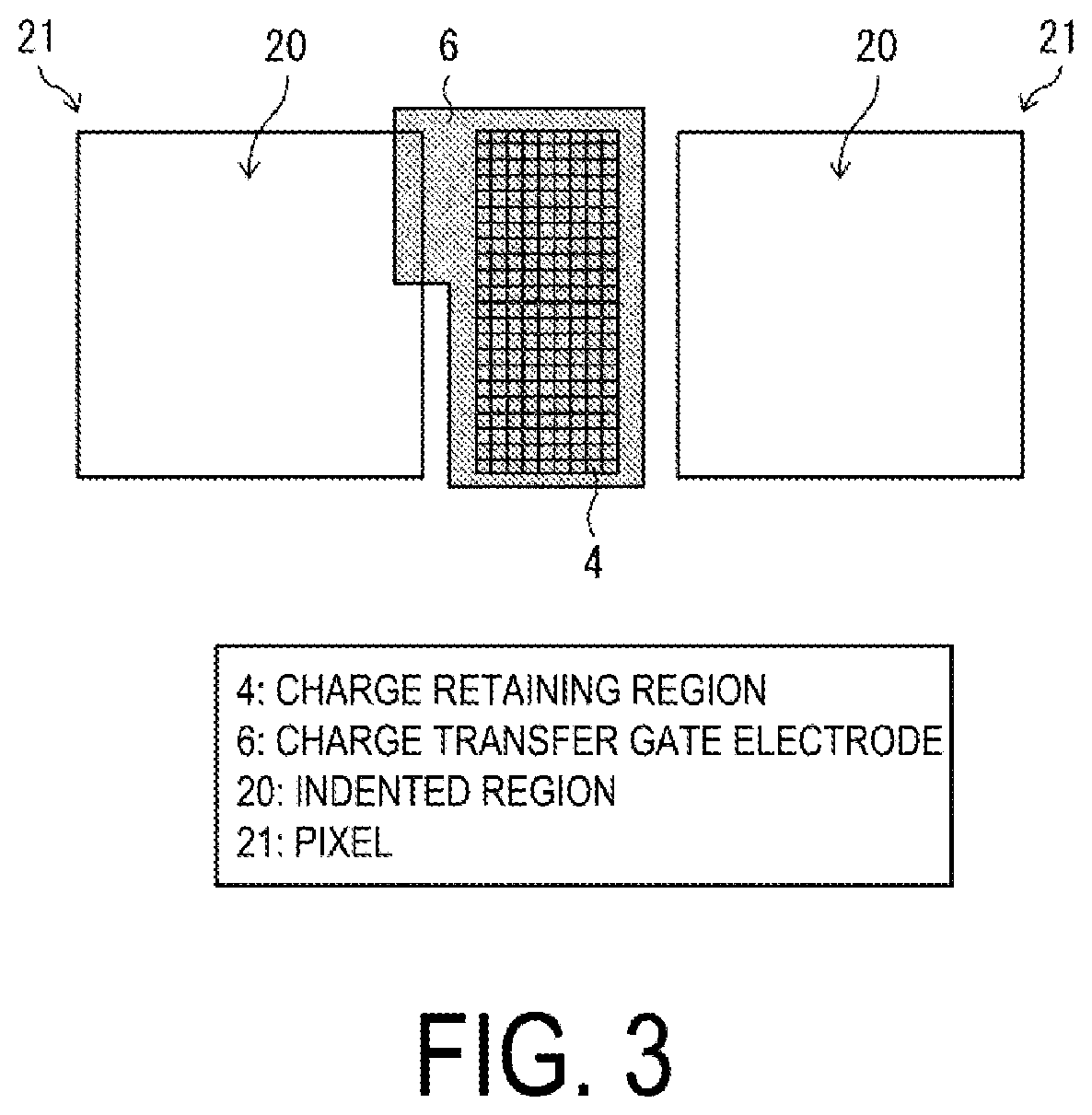Solid-state imaging device
a solid-state imaging and imaging device technology, applied in semiconductor devices, radio-controlled devices, electrical devices, etc., can solve the problem of parasitic light sensitivity noise that cannot be removed, and achieve the effect of high image quality, parasitic light sensitivity noise removal, and high sensitivity
- Summary
- Abstract
- Description
- Claims
- Application Information
AI Technical Summary
Benefits of technology
Problems solved by technology
Method used
Image
Examples
first embodiment
[0027]Hereinafter, one embodiment of the present disclosure will be described in detail.
[0028]FIG. 1 is a diagram illustrating a configuration of pixels 21 arranged in a solid-state imaging device 18 according to a first embodiment. FIG. 2 is a structural cross-sectional view of a pixel 21 of the solid-state imaging device 18 according to the first embodiment. FIG. 3 is a plan view of the pixels 21.
[0029]The solid-state imaging device 18 includes a substrate 19. The substrate 19 includes a semiconductor substrate 1 and an epitaxial layer 2 formed on the semiconductor substrate 1.
[0030]The solid-state imaging device 18 includes the plurality of pixels 21 arranged in a matrix form on the substrate 19. Each pixel 21 includes: a photoelectric conversion region 3 for converting light that has entered the substrate 19 into charge; a charge retaining region 4 for retaining the charge as a result of the conversion by the photoelectric conversion region 3; and a pixel transistor region 17 in...
first modified example of first embodiment
[0076]FIG. 8 is a structural cross-sectional view of a pixel 21 of a solid-state imaging device 18A according to a first modified example of the first embodiment.
[0077]A difference from the solid-state imaging device 18 of the first embodiment is that the optical waveguide 11 is disposed between the passivation film 12 and the flattening film 13. Other structures and operations / effects are the same as those of the solid-state imaging device 18 of the first embodiment, and thus descriptions thereof will be omitted.
[0078]With the optical waveguide 11 disposed in the solid-state imaging device 18A, light that has entered the microlens 15 passes through the flattening film 13 to enter the optical waveguide 11. In the optical waveguide 11, the incident light is condensed to the center axis in a direction perpendicular to the substrate 19. The condensed incident light is emitted from the optical waveguide 11, and passes through the interlayer insulating film 9 to enter the photoelectric c...
second modified example of first embodiment
[0083]FIG. 9 is a structural cross-sectional view of a pixel 21 of a solid-state imaging device 18B according to a second modified example of the first embodiment.
[0084]A difference from the solid-state imaging device 18 of the first embodiment is that the color filter 14 is disposed between the flattening film 13 and the microlens 15. Other structures and operations / effects are the same as those of the solid-state imaging device 18 of the first embodiment, and thus descriptions thereof will be omitted.
[0085]With the color filter 14 disposed in the solid-state imaging device 18B, light of a predetermined wavelength that has entered the microlens 15 passes through the color filter 14, and light of the other wavelengths is absorbed by the color filter 14. Thus, only the light of the predetermined wavelength enters the photoelectric conversion region 3 to be subjected to the photoelectric conversion.
[0086]In the solid-state imaging device 18B of the present embodiment, the color filter...
PUM
| Property | Measurement | Unit |
|---|---|---|
| distance | aaaaa | aaaaa |
| depth | aaaaa | aaaaa |
| charge | aaaaa | aaaaa |
Abstract
Description
Claims
Application Information
 Login to View More
Login to View More - R&D
- Intellectual Property
- Life Sciences
- Materials
- Tech Scout
- Unparalleled Data Quality
- Higher Quality Content
- 60% Fewer Hallucinations
Browse by: Latest US Patents, China's latest patents, Technical Efficacy Thesaurus, Application Domain, Technology Topic, Popular Technical Reports.
© 2025 PatSnap. All rights reserved.Legal|Privacy policy|Modern Slavery Act Transparency Statement|Sitemap|About US| Contact US: help@patsnap.com



